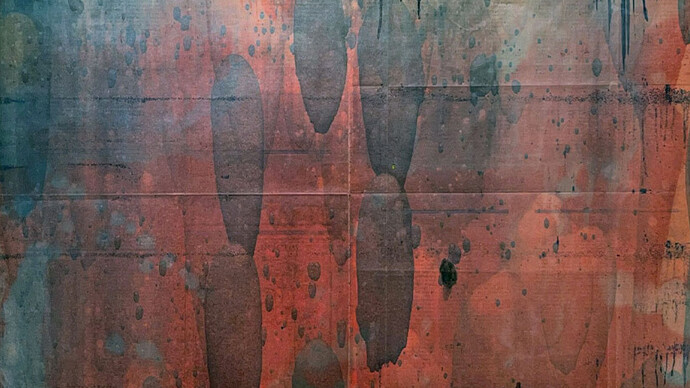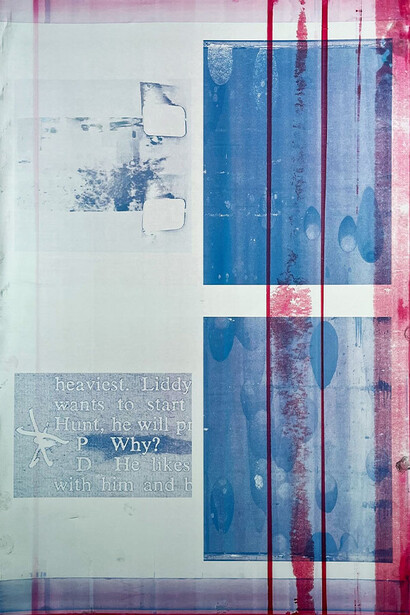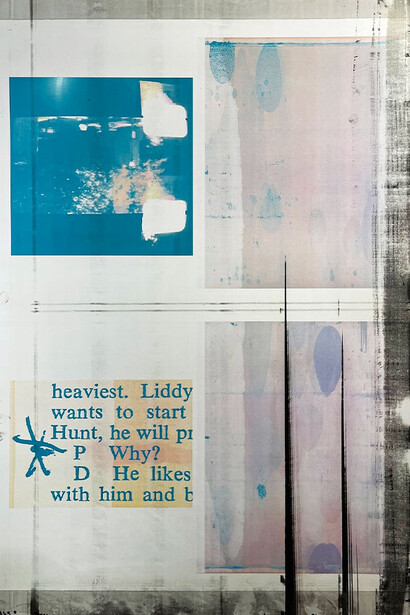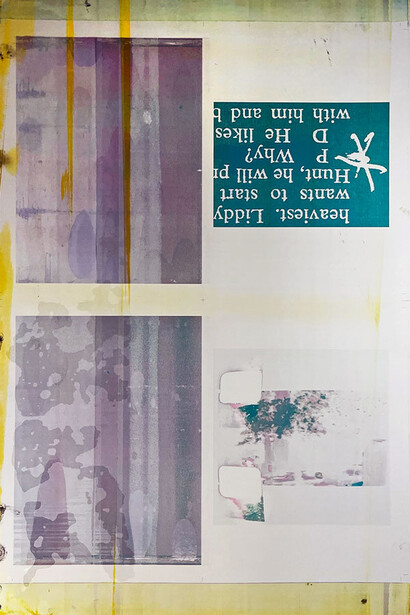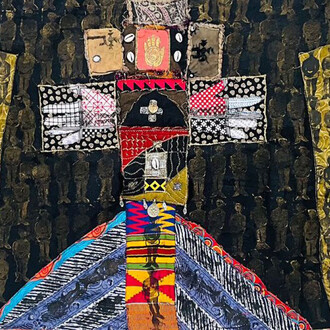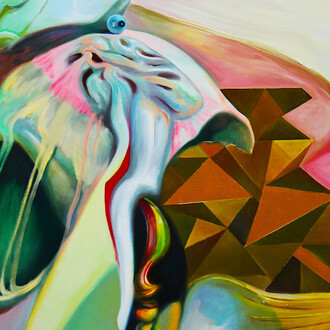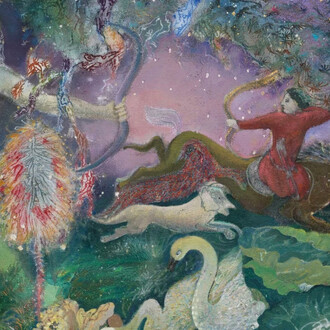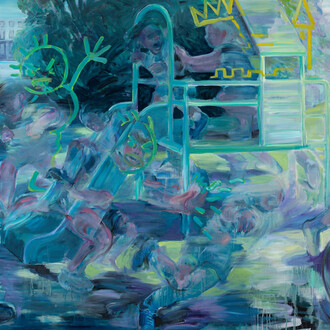Traced and plated, part of a curatorial initiative by Jennifer Baahng titled We are the land, showcases the repurposing and transformation of discarded remnants of mass media, providing a compelling reflection on how human actions leave imprints and scars on the land we occupy. R.C. Baker’s newspaper monoprints and printing plate works affirm the enduring vitality of painting by integrating new materials, repurposing physical printing media, and challenging the landscape genre within contemporary art.
Baker’s Jornada del muerto monoprints were begun in the early 2000s, when high-speed newspaper presses were being cleaned with solvent sprays by pressmen anxious to start a new press run. As the press cylinders slowed, the solvents spread. When they mixed with the remaining inks, the articles, graphics, and halftone photos that were originally being printed for the Village Voice Literary Supplement were transformed into bulbous blurs of irradiated color, creating serendipitous abstractions on the last few pages as the huge presses ground to a halt.
Baker transferred these sheets to his studio, and in 2008 completed them by adding titles — Jornada del muerto +250,000 years and Jornada del muerto +400,000 years — that arose from his research into atomic bomb tests and nuclear waste repositories in the deserts of the American Southwest. These titles (English translation, “Journey of the dead man”) refer to a desolate yet majestically bleak desert landscape in New Mexico.
A decade later, Baker printed a tabloid newspaper, “President: ‘Why?’”, which served as a catalog for a 2018 exhibition, and realized he could create a conceptual loop by reproducing in it one of the Jornada abstractions. For those two pages in the tabloid he added magenta to emphasize the long-term irradiation of the desert, caused by the half-lives of nuclear elements in fallout from weapons testing and in the radioactive waste being stored in vast subterranean chambers in the Southwest. The four printing plates that had been utilized to print the tabloid’s Jornada del muerto +250,000 years spread — covered with inks and solvents in uncontrolled and unpredictable manners — became ready-made artworks, despite the pressmen viewing them as suitable only for recycling the aluminum substrates. These two pages were complemented by another set featuring images such as an existential quote from President Nixon—“Why?”—and a frame from Abraham Zapruder’s 8mm film of the JFK assassination. The vibrant, lava-lamp-like blobs of color evoked a title combining tragedy and elegance: “Zapruder Rising,” a collection of four plate paintings.
Traced and plated affirms that the material history of our media is deeply connected with the ecological future of the earth. Our industrial endeavors have left enduring marks of control, extraction, and waste on the land. By presenting a novel and compelling visual framework in contemporary art, where material and aesthetic intent converge into a unified art form, the exhibition extends beyond a historical perspective. It contextualizes present ecological challenges, including severe land and water contamination and the significant impacts of climate change, and elucidates the intrinsic link between media cycles, materials, and ecological realities in a new genre of landscape paintings. We are the land: traced and plated emphasizes the abstract beauty and residual history embedded within the artwork, encouraging reflection on the land we inhabit, as both chroniclers and bearers of scars.
